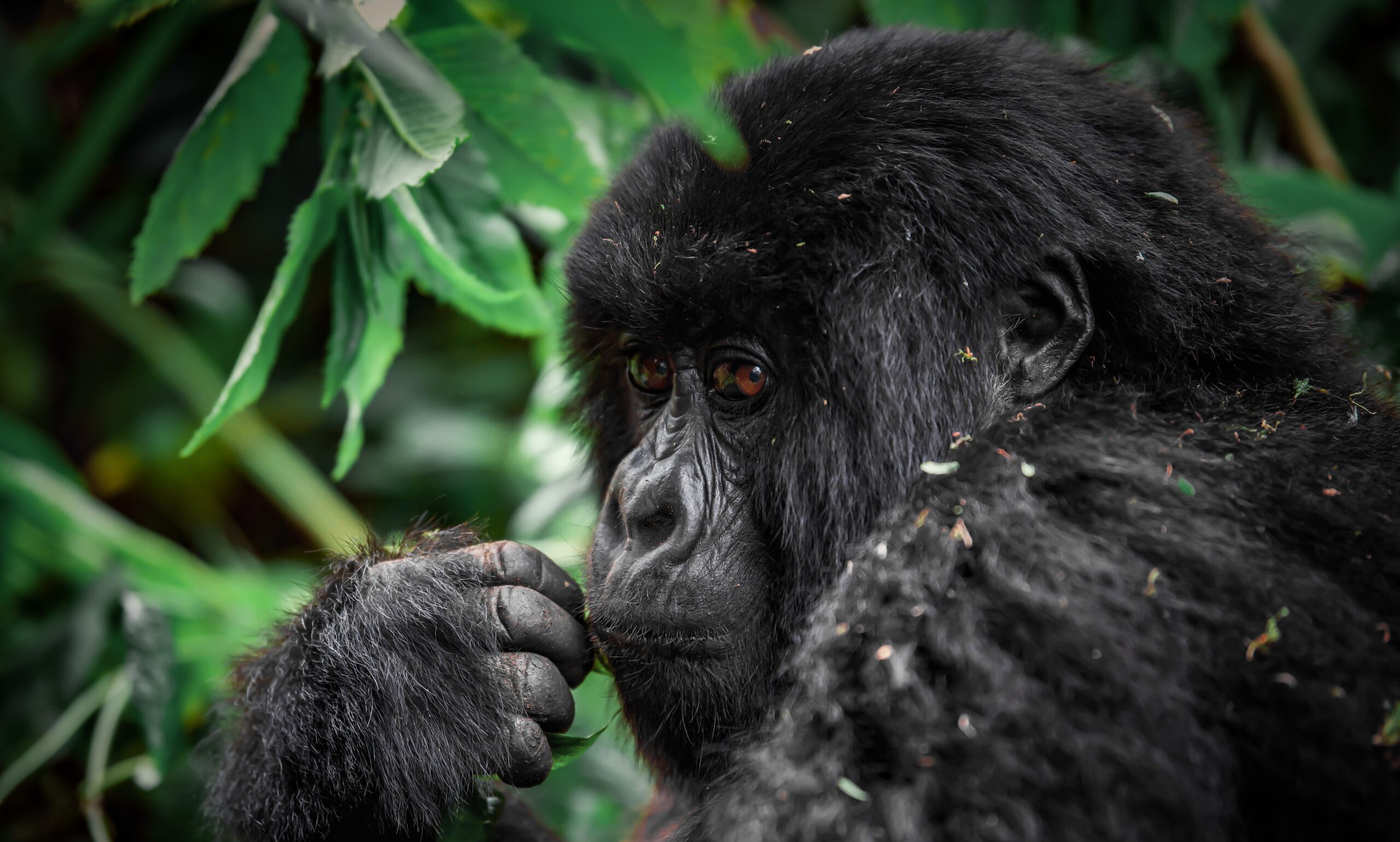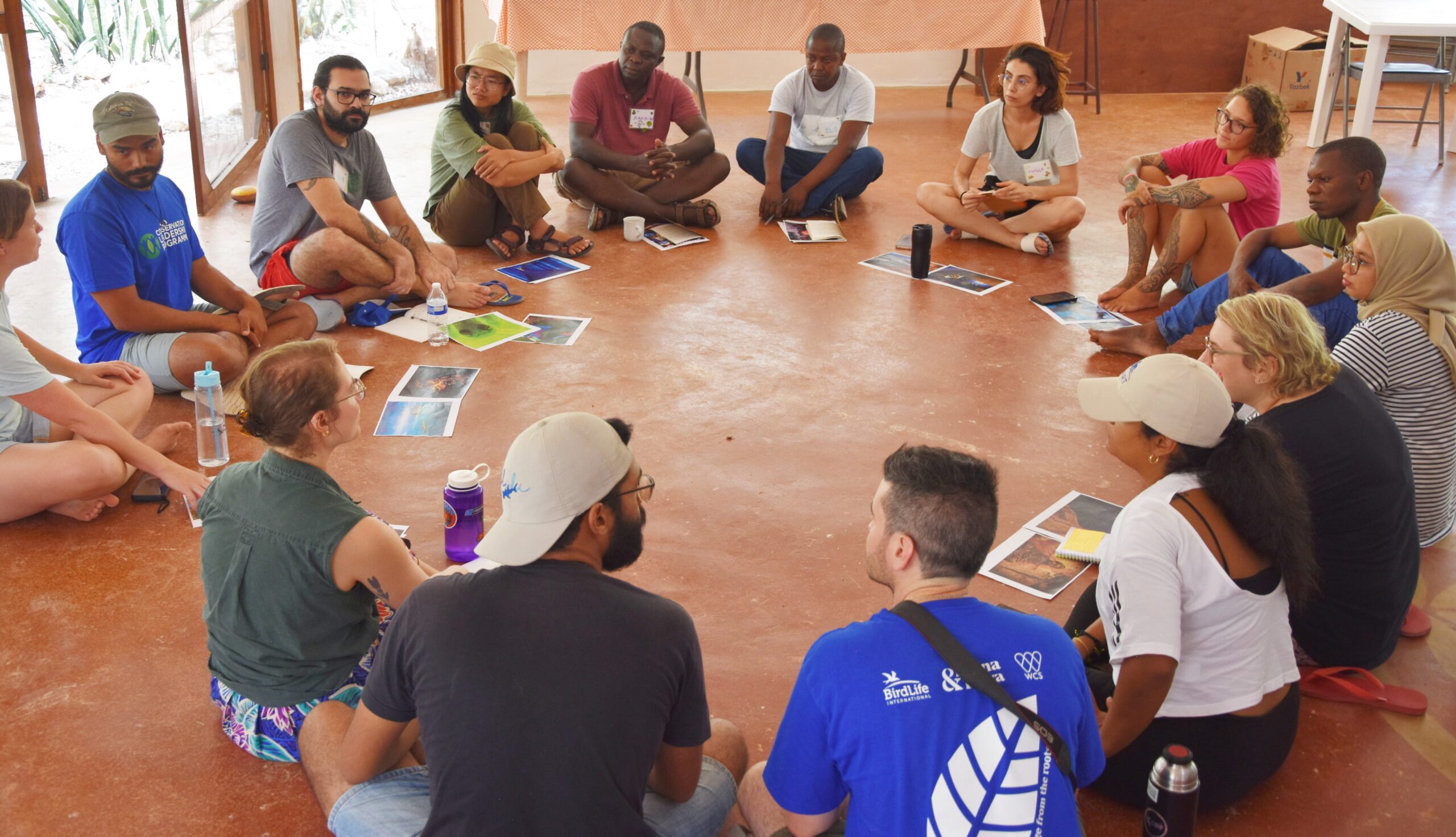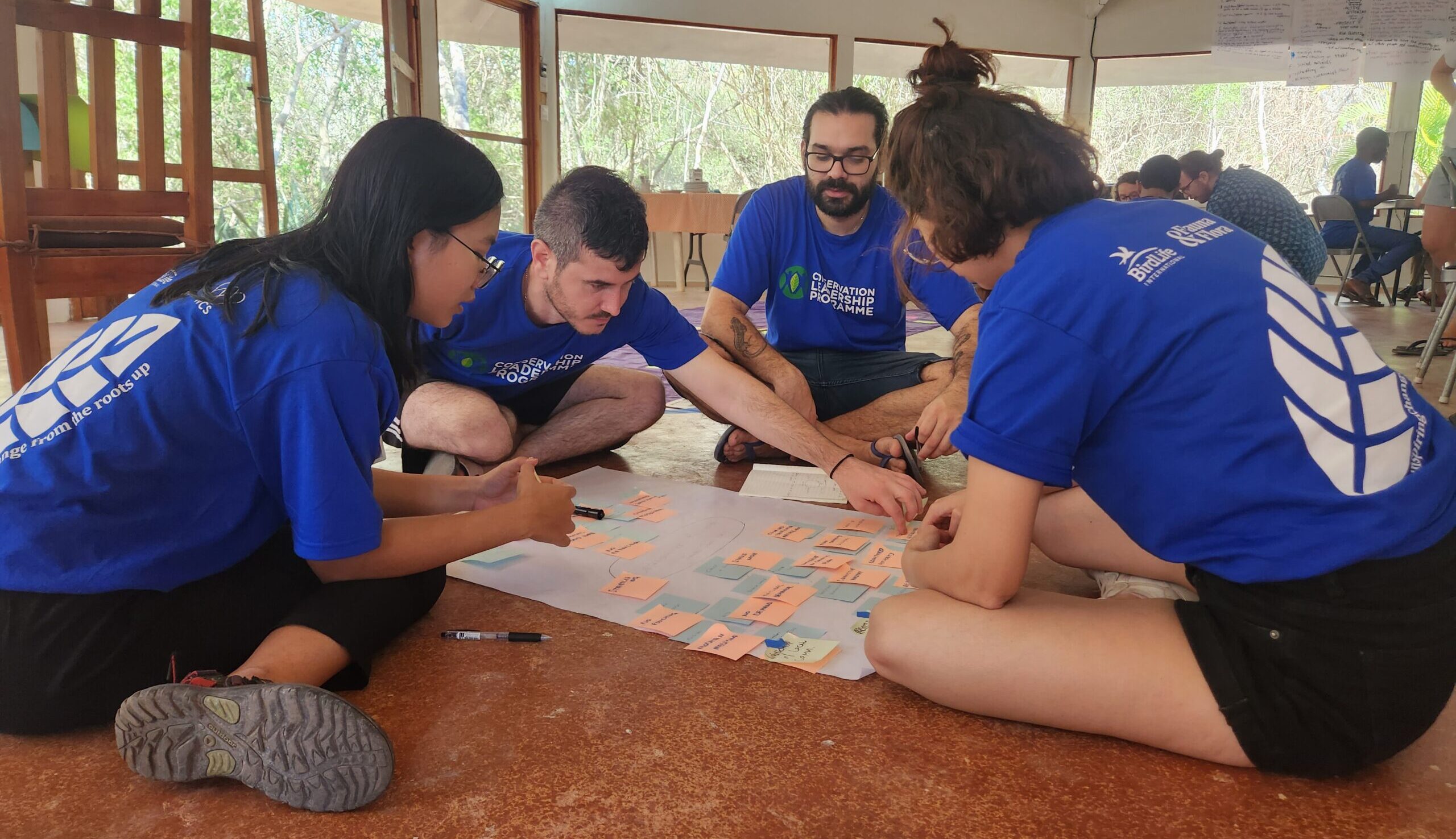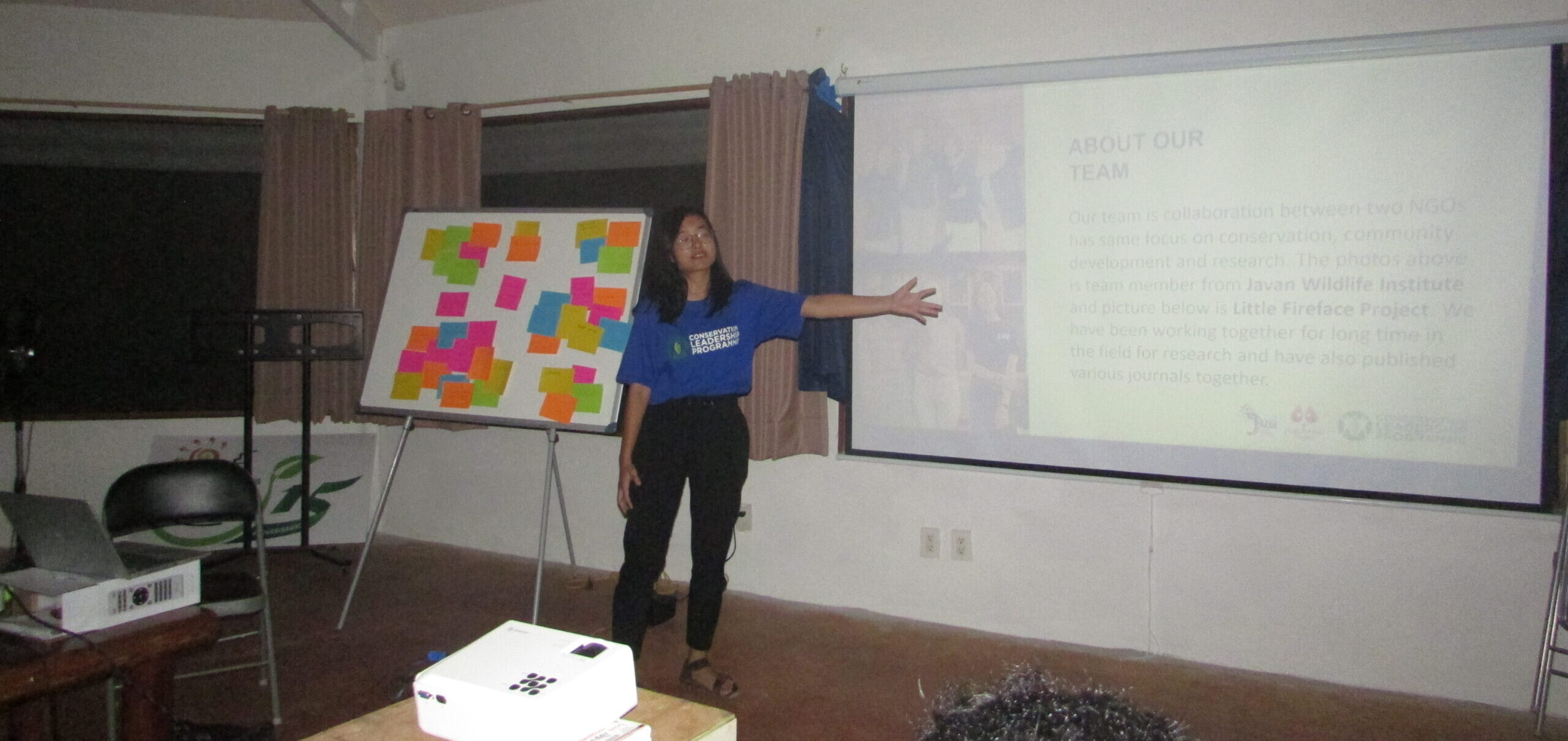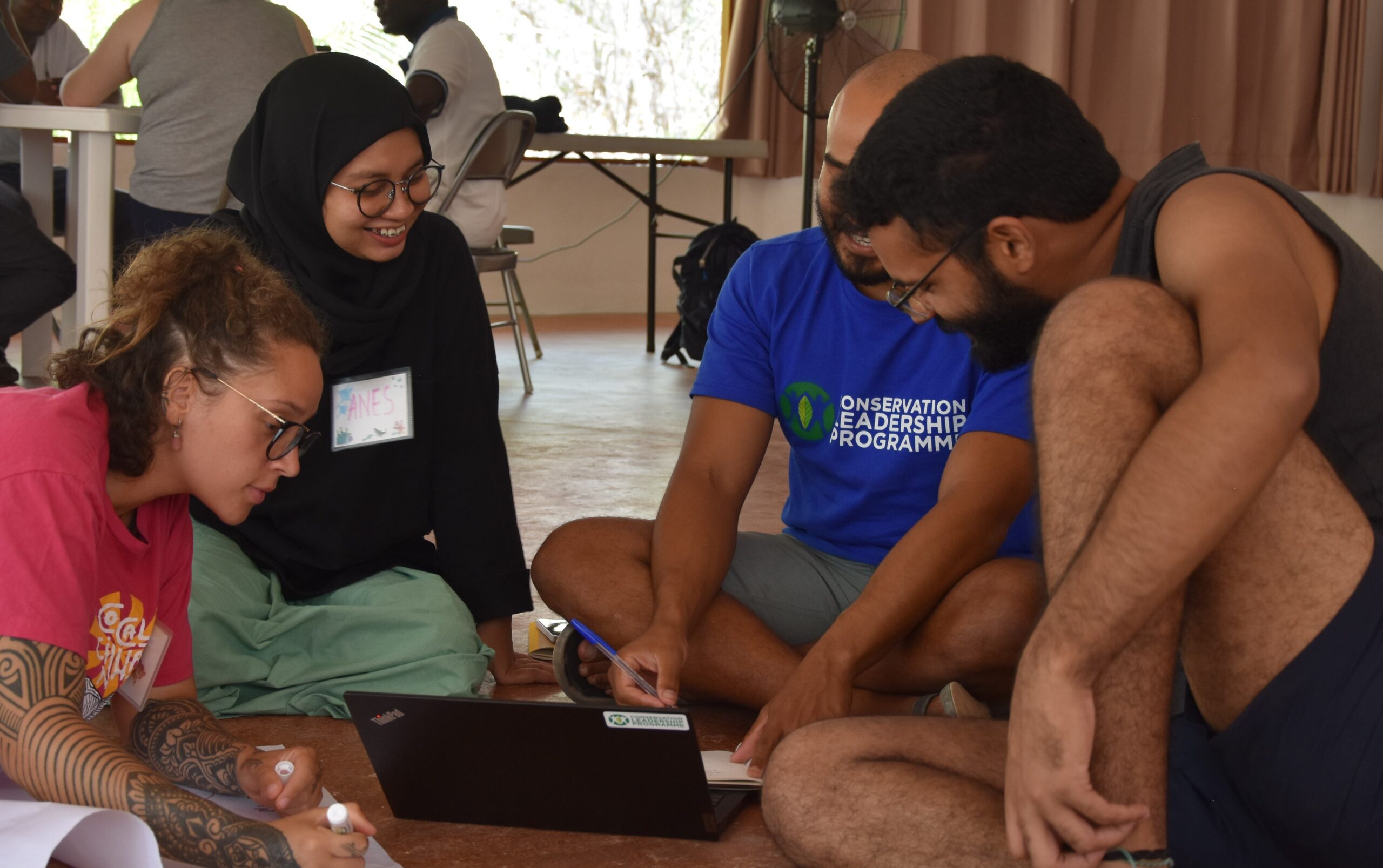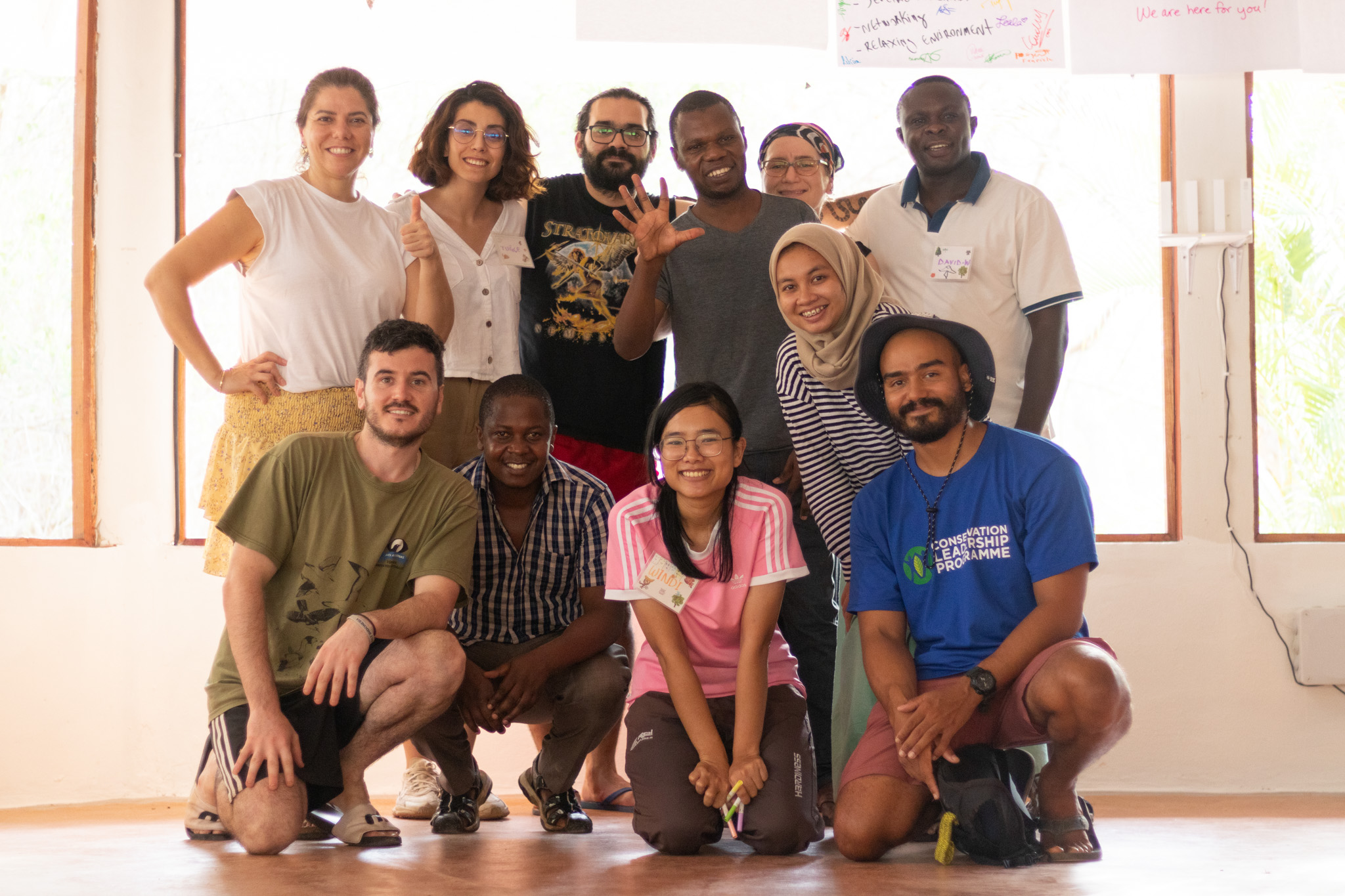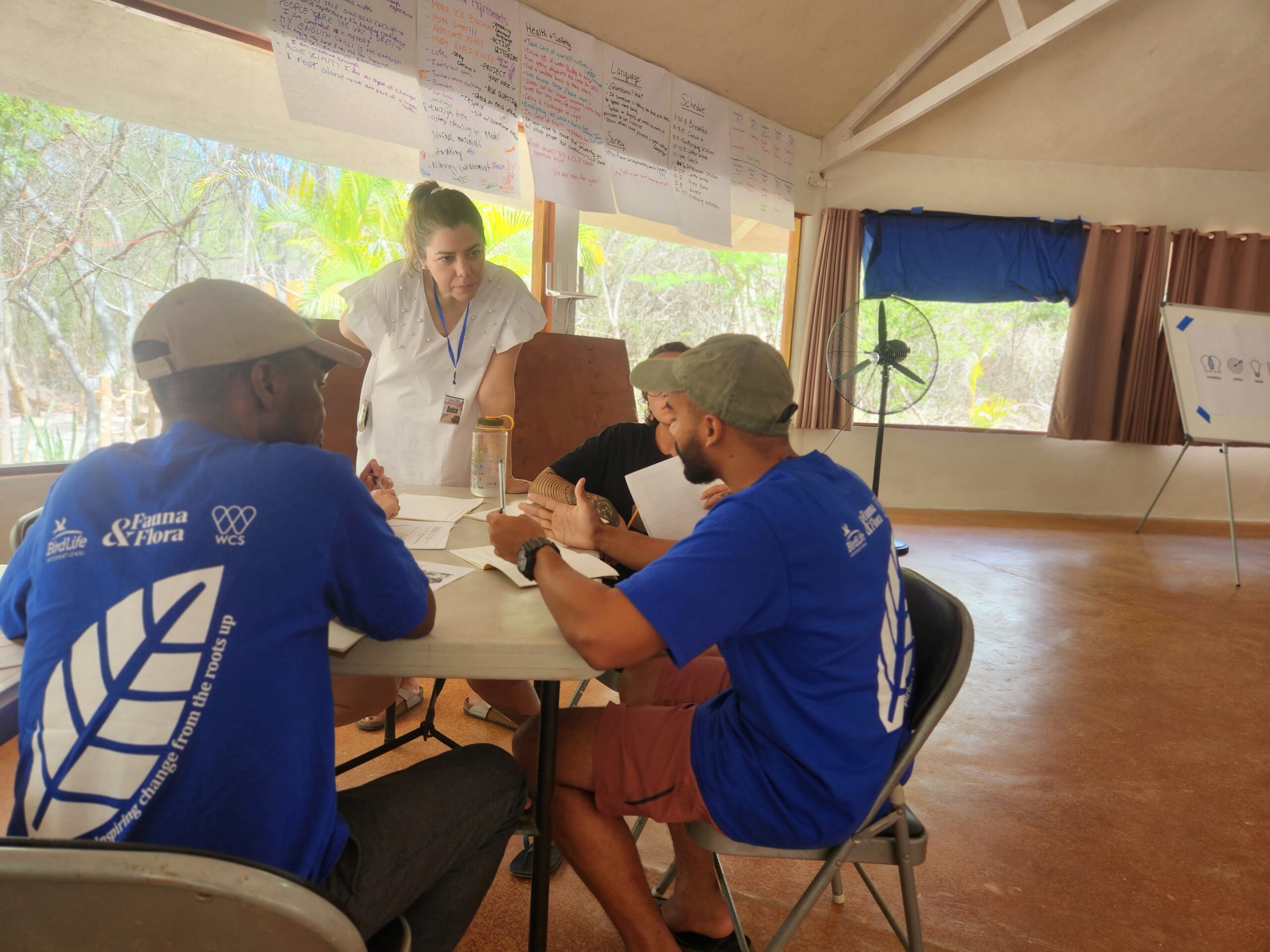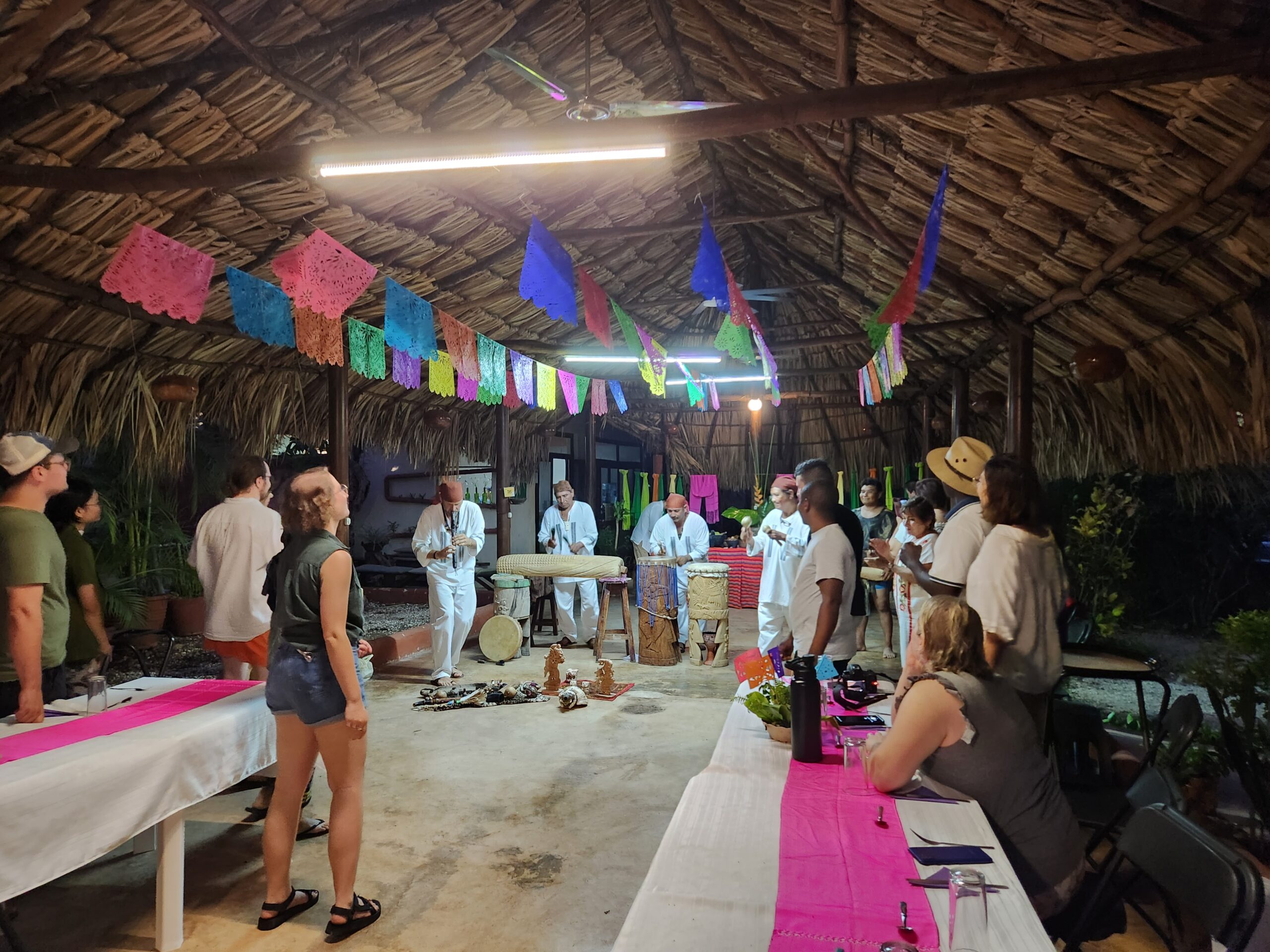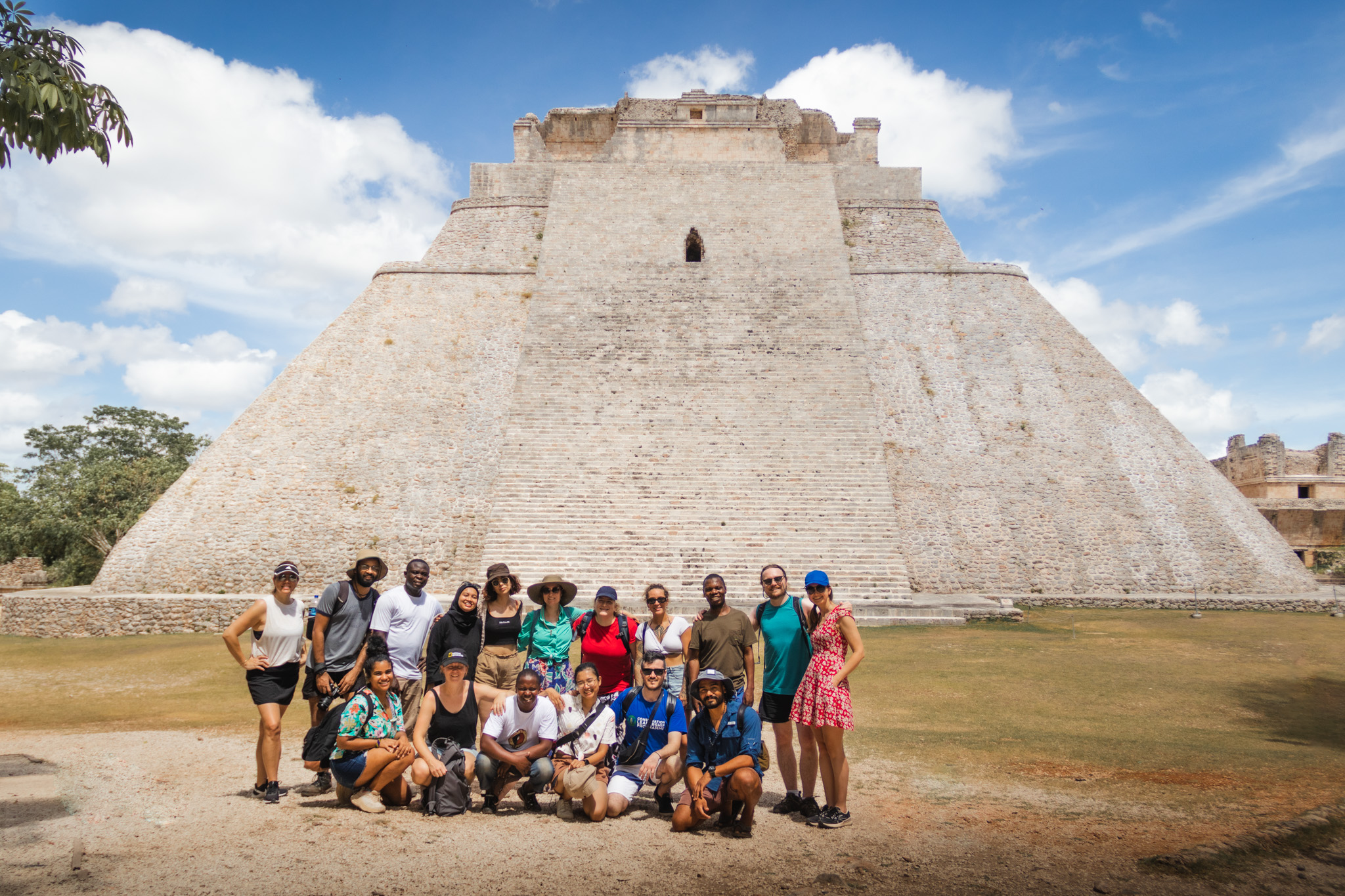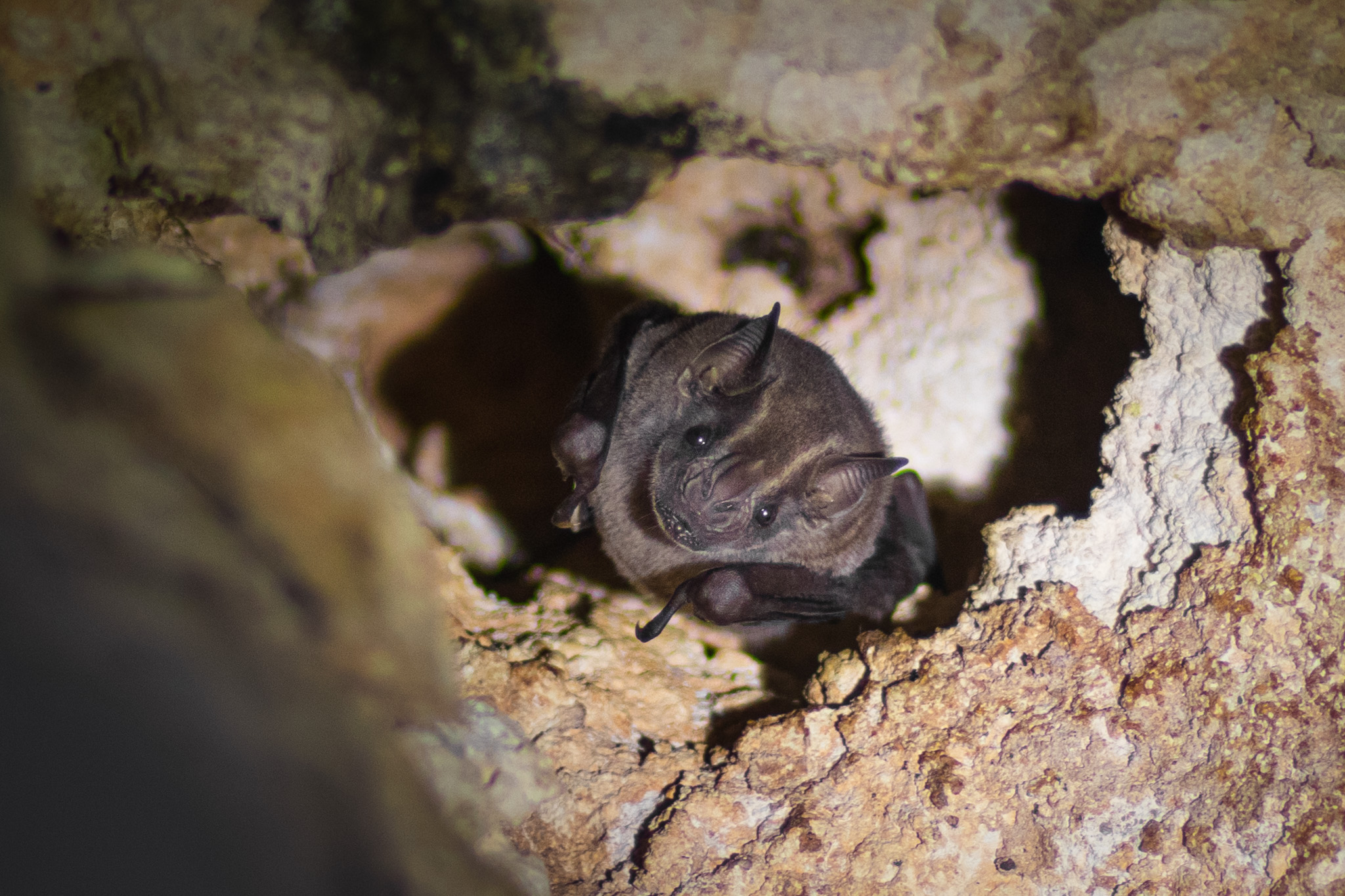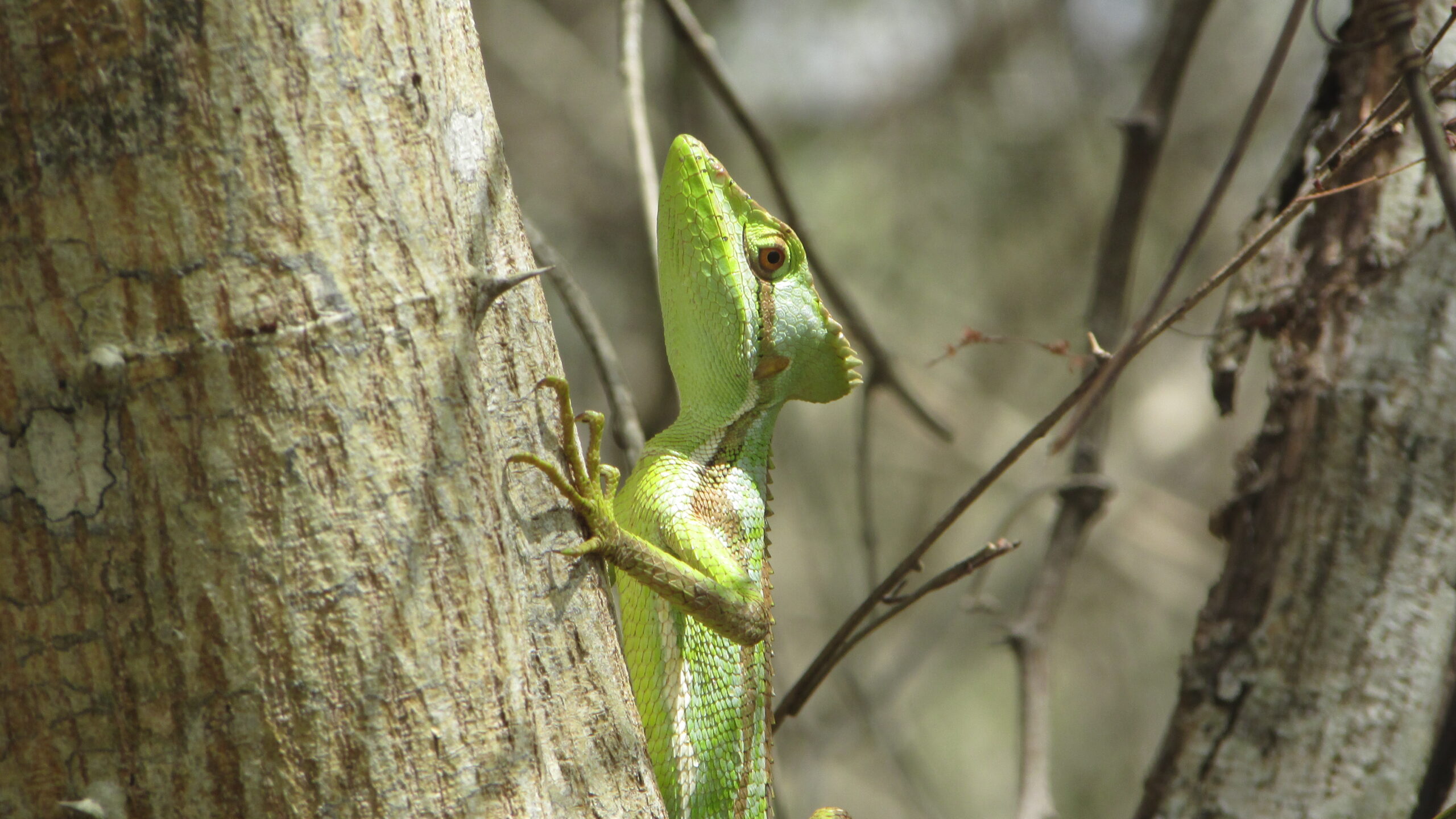Since 2010, the Conservation Leadership Programme (CLP) has supported two projects focused on the conservation of Critically Endangered brown spider monkeys in Colombia, led by Dr. Gabriela de Luna. Leala Rosen, CLP Program Officer at the Wildlife Conservation Society, recently visited the team at the project site to learn first-hand how CLP support has fostered their long-running conservation efforts.
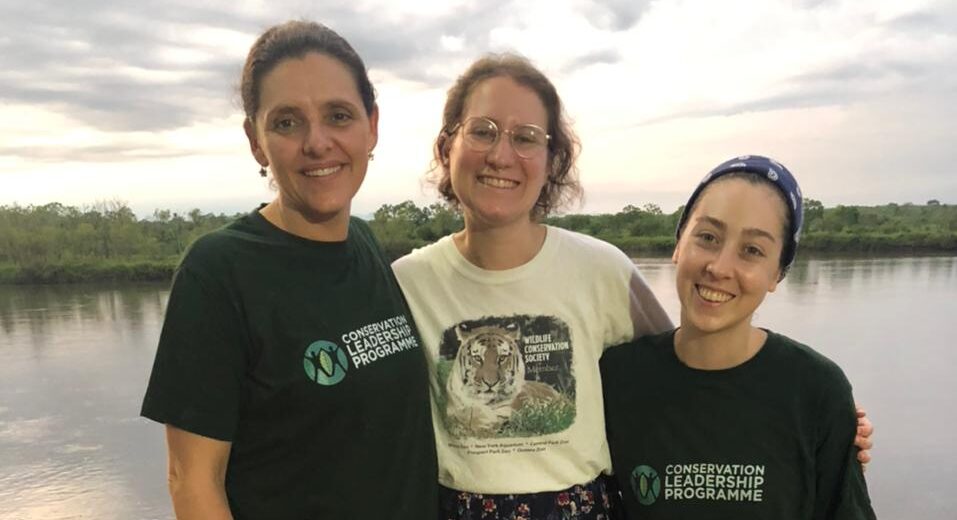
In Colombia, Gabriela de Luna team’s project site is in the middle Magdalena River valley within the Chocó-Magdalena-Tumbes Biodiversity Hotspot- an area spanning 1,500 square km of hyper-diverse rainforests and wetlands punctuated by oil palm plantations, cattle-grazing pastureland, and forest fragments.
In this fragmented landscape, brown spider monkeys cling on to life. They are one the most endangered primates in the world, with their numbers dwindling due to hunting and habitat loss – a trend aggravated by the absence of protected areas in the region.
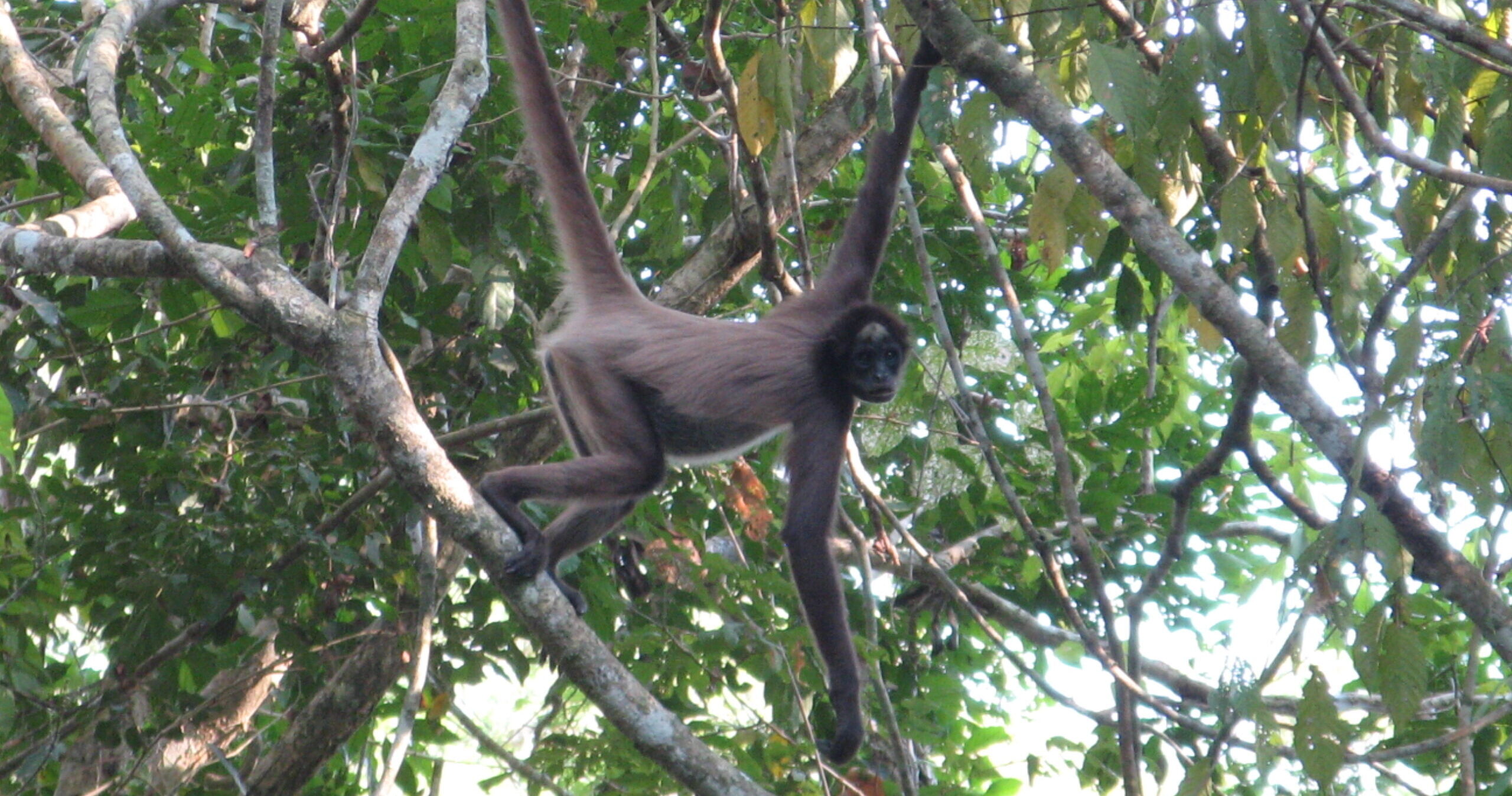
In a bid to foster primate research and conservation here, in 2010, two Colombian researchers, Gabriela de Luna and Andres Link, founded the NGO Fundación “Proyecto Primates” and set up the only long-term research project on the brown spider monkey in Colombia.
CLP support was vital in getting this project off the ground. Having gained a CLP Future Conservationist Award in 2010, including a $15,000 project grant, the team’s research uncovered the key role brown spider monkeys play in seed dispersal and habitat restoration. They also established relationships with local communities and landowners to generate support for their conservation plans, including forest restoration activities and an environmental education program.
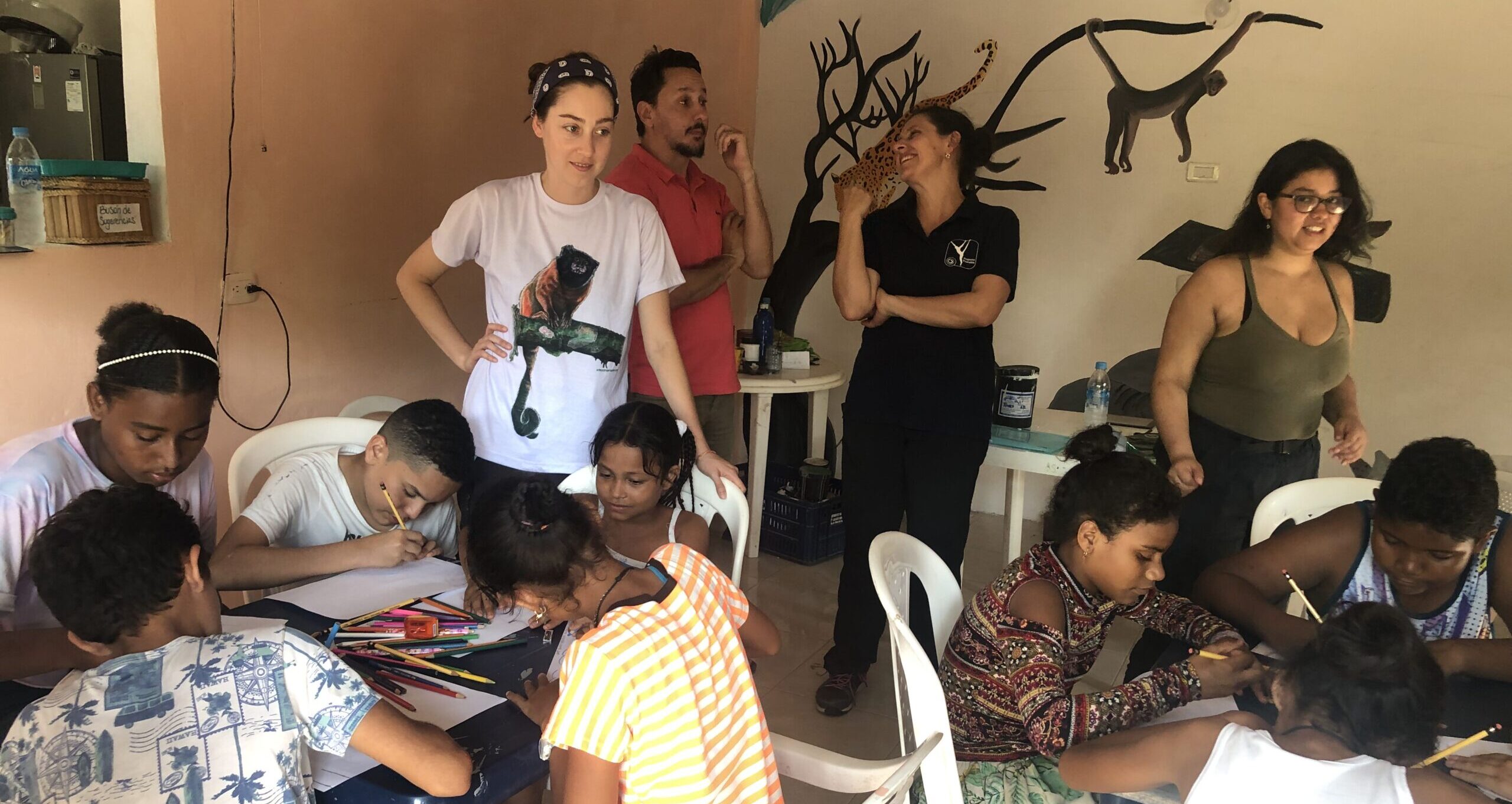
In 2022, the team received a CLP Follow-Up Award, including a $25,000 project grant, to help them scale up their efforts. During her visit, Leala was delighted to witness how CLP has enabled the team to continue to drive conservation impact over such a long period of time.
“This CLP Follow-Up Award highlights the scalability of CLP project work, particularly in helping to foster long-standing ties with the local community to help enact long-term, tangible positive change – which is a key part of CLP’s overall mission,” she said.
By working with local partners, and with continued CLP support, the team has been able to establish multiple native tree nurseries for brown spider monkeys, planted over 30,000 trees and reconnected over 1,000 hectares of native forest fragments. This concerted effort has played a crucial role in supporting the conservation of the brown spider monkey by enhancing habitat availability and connectivity.
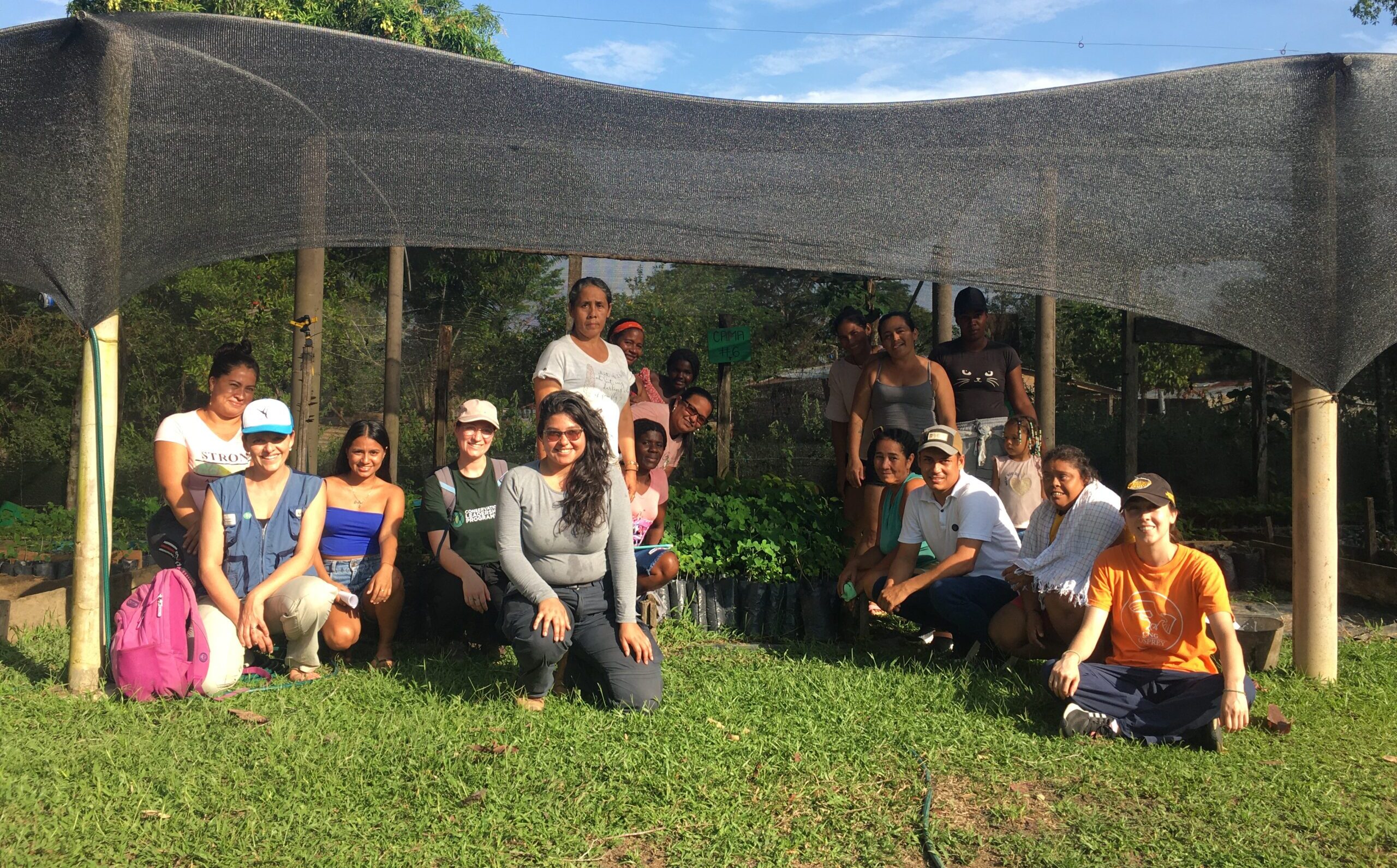
Their ongoing work with the same communities living near the forest has focused on an environmental education program to promote behaviors that improve the conservation of the biodiversity in the region.
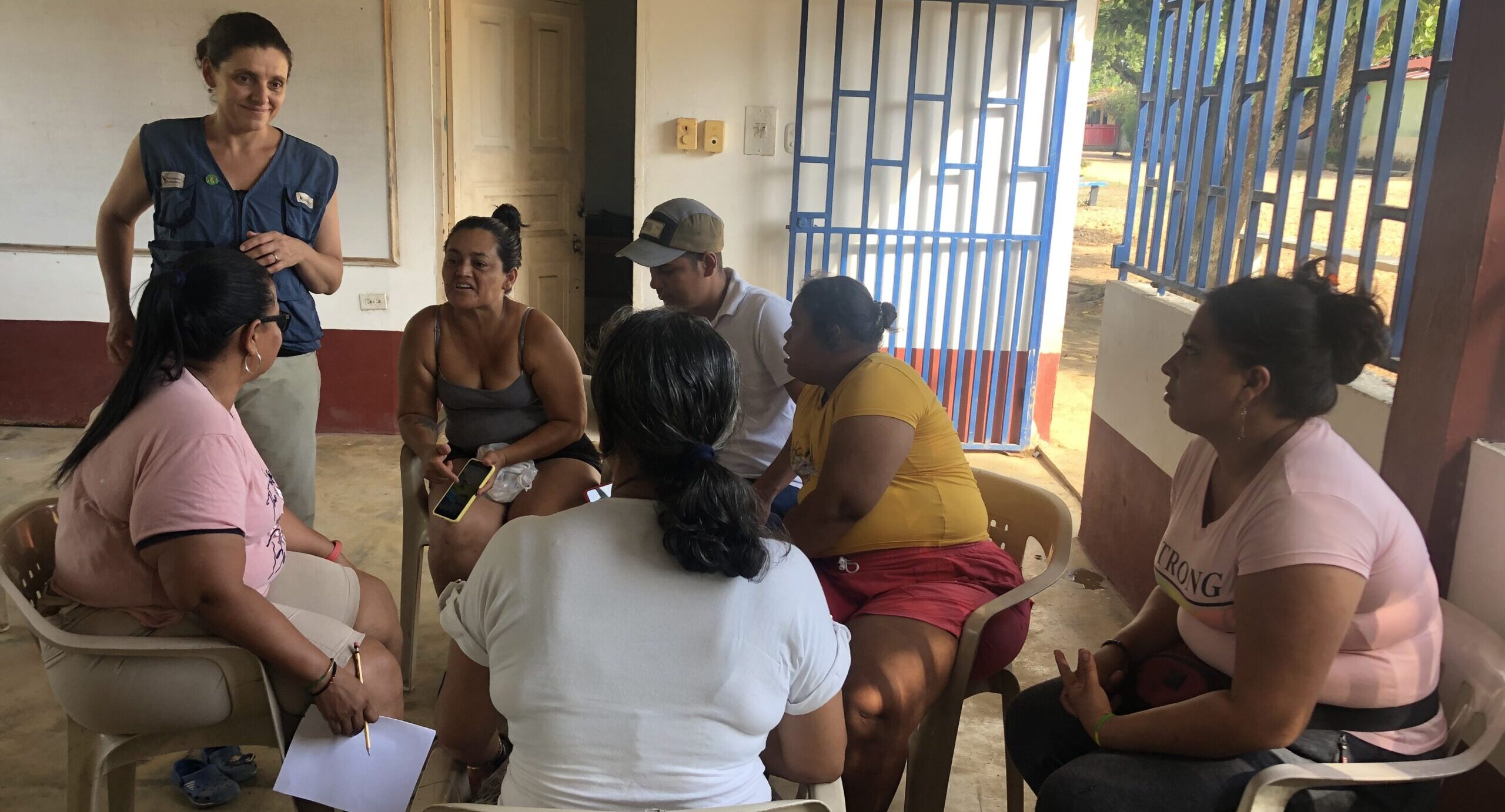
By engaging local stakeholders, the team has also secured funds to buy two private reserves and supported two large farms to become private natural reserves to create high-quality connected habitats for the brown spider monkey and promote sustainable development projects.. And, if that wasn’t enough, they helped create the National Action Plan for the Conservation of the Brown Spider Monkey in Colombia to establish protection for the species.
The team also continues to run the Festival del Choibo (spider monkey festival) as part of their community outreach activities; an event they started during their first CLP Team Award and that has generated a surge in local community support for brown spider monkey conservation.
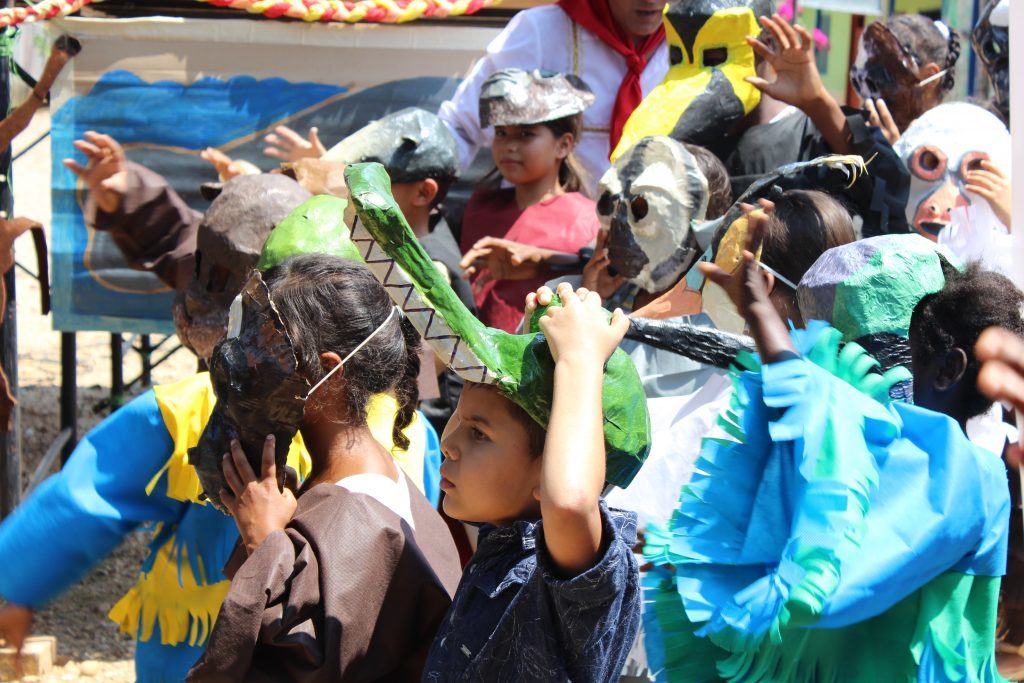
“It’s been a privilege to hear first-hand how the team has scaled up their efforts in the past 10-12 years, and I’ve really enjoyed learning about what they’ve achieved and the exciting plans they have for the future,” said Leala.
By the end of their CLP project, the team anticipates developing conservation agreements with 10 landholders to create and manage natural private reserves in the region. Additionally, they plan to facilitate conservation education workshops in five communities neighboring their project site, to generate greater awareness about the importance of primates and their conservation.
Below Leala shares excerpts from the journal she wrote during her project visit.
Day 1: Bocas del Cararare: Local Communities’ Involvement in Environmental Conservation Initatives
First, I flew to Barrancabermeja with Gaby and we drove to Bocas del Carare, approximately 2 hours away. In Bocas, I met several community members, including members of the local women’s association, NGO workers, students, hotel owners (who donate hotel rooms to accommodate short-term volunteers with Proyecto Primates). Many of Proyecto Primates’ workshops are held at the women association’s center, including the youth workshop, which focuses on active listening, communication skills, and getting students inspired to support the Festival del Choibo preparations. In the afternoon, community members worked on a mural at the women’s center, which highlights the biodiversity of the middle Magdalena region.
After visiting the research stations, we returned to Bocas, and Gaby and Laura Gomez (another CLP project team member) facilitated a workshop for International Women’s Day. Participants shared the conservation work they are proud of being involved in, and wrote poems to inspire the next generation of female-identifying youth to get involved in conservation within their local communities.
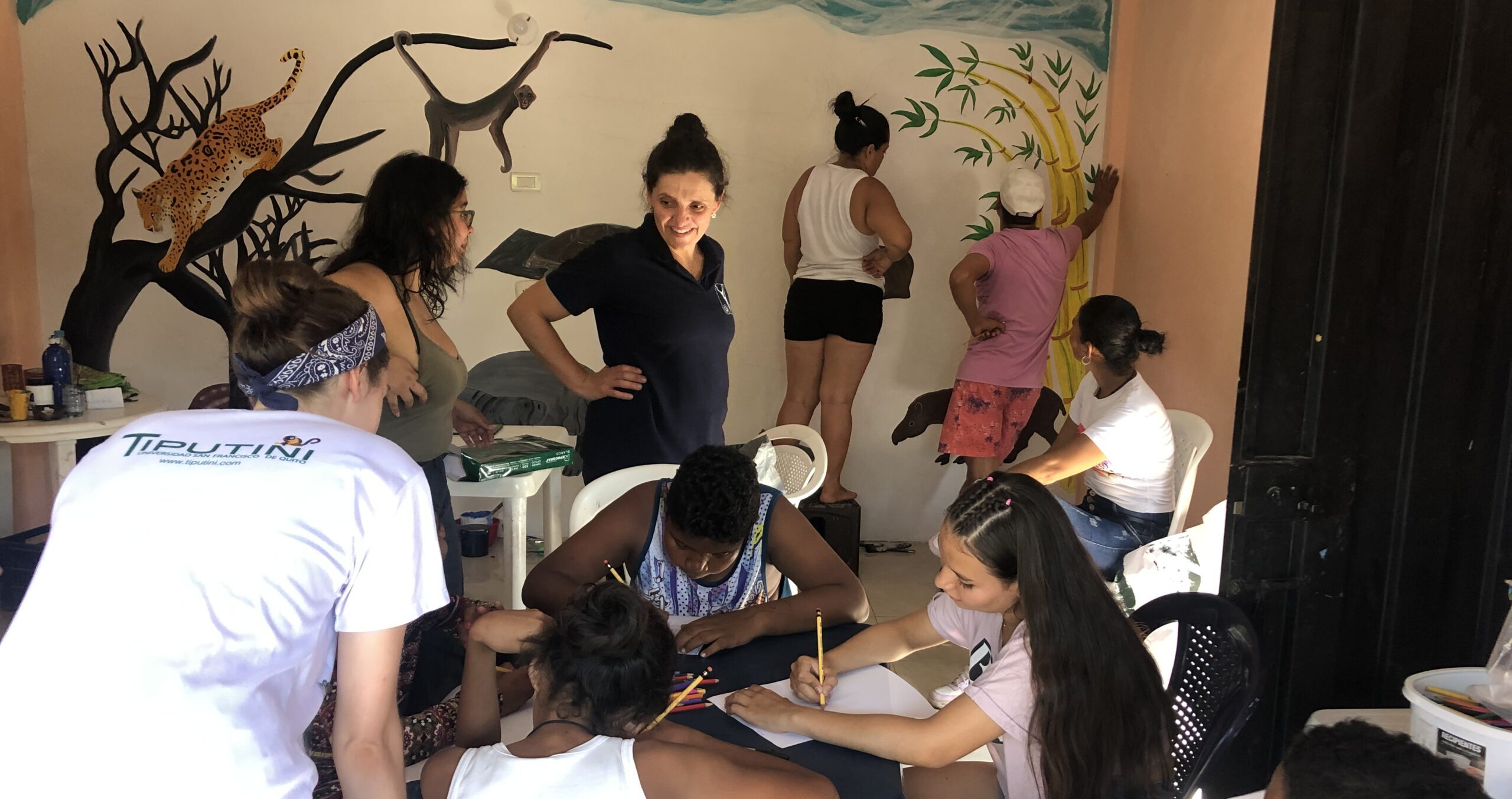
Day two: San Juan Research Station, Forest Research Station Visit
From Bocas del Cararare, we traveled by boat to visit Proyecto Primates’ forest and San Juan research stations. Along the way, we saw several herons, kingfishers, and other bird species, as well as howler monkeys. On the way to the San Juan research station our boat got stuck in reeds. The team tells me this is a common occurrence; they prefer to let the reeds grow wild because they deter hunters and fishermen from visiting the area around the San Juan research station.
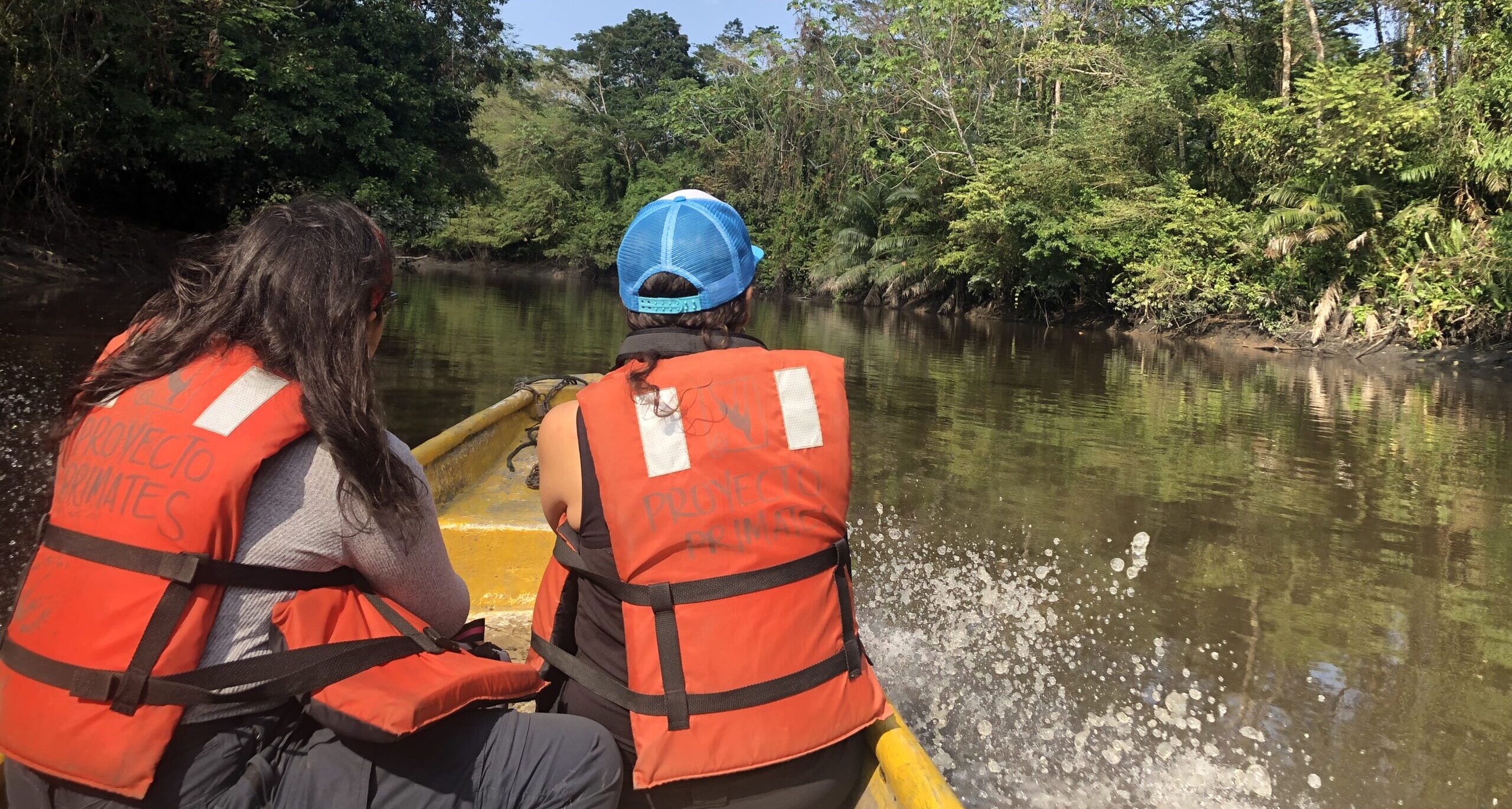
Throughout the day, we saw several small groups of howler monkeys, as well as – amazingly – a brown spider monkey! In the evening, we returned to the forest research station and spoke to the student researchers there, had dinner, and stayed the night. We also visited one of the first wildlife corridors established by Proyecto Primates, which can be found among some of the fragmented forest area near the research station. There, we saw another three brown spider monkeys; Gaby tells me there are approximately 60 in the area. We also visited a plant nursery that cultivates native trees for use in the wildlife corridors and are good for erosion control and nitrogen fixation, or used as food or habitats for the primate population in the area.
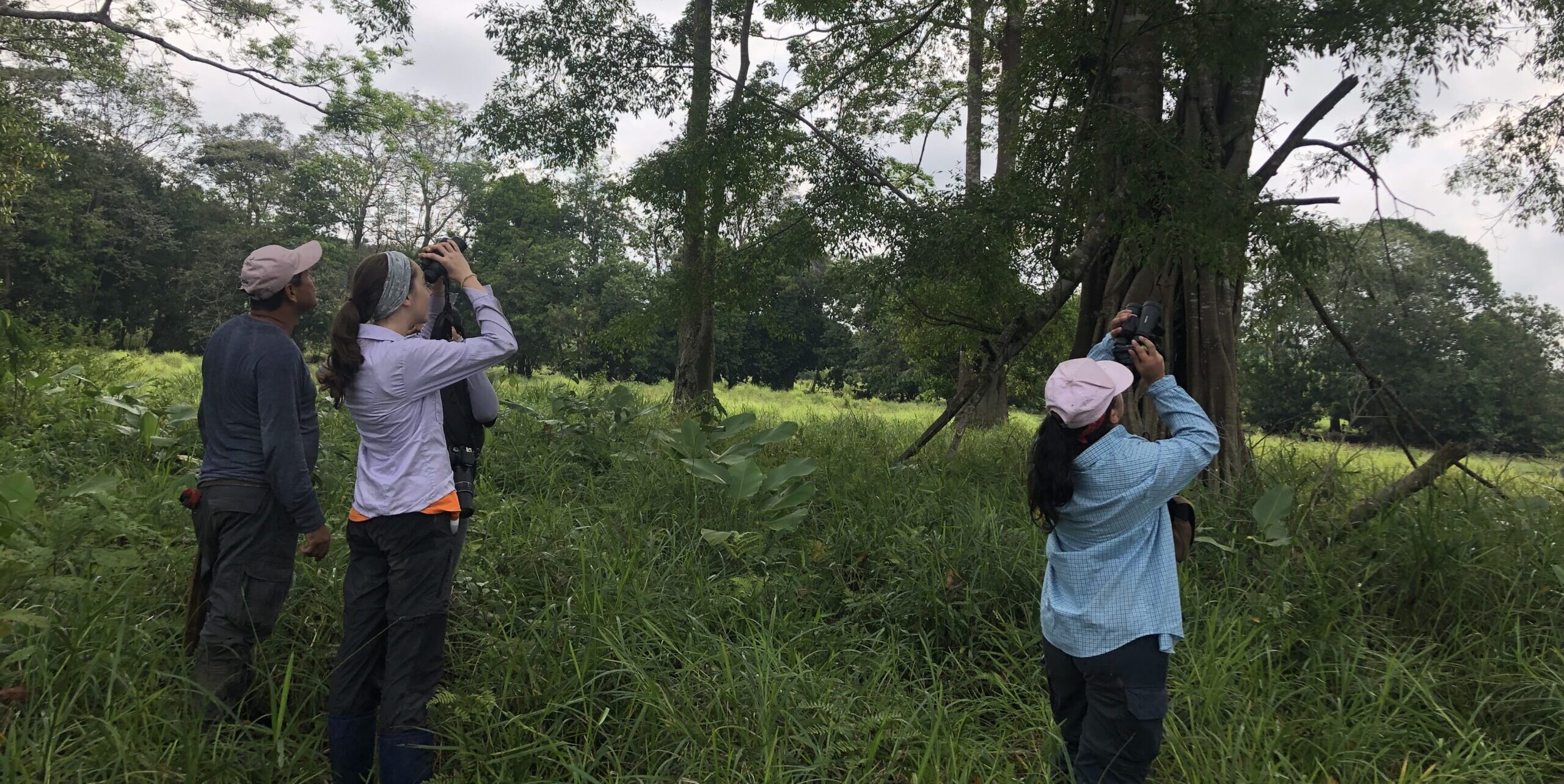
Day 3: Visit to the first successful conservation agreement and wildlife corridors, Lucitania Ranch
Finally, Laura and I travelled to Lucitania, an area comprised of 3,600 hectares of private ranch land. Laura explains that Proyecto Primates developed its first conservation agreement with the owners of this land 7-8 years ago, and the team plans to replicate their success with several other landowners in the coming years. A Proyecto Primates employee cultivates seedlings and manages the native tree nursery here, as well as leads tree plantings, maintains the wildlife corridors, and coordinates with cattle herders to ensure they do not eat the trees in the wildlife corridors. The corridors themselves are 5-15 meters wide, and some of them serve as riparian buffers alongside a small river. The ones we visited were 2 km long, but there are plans to extend those as well as develop additional wildlife corridors in the area. Proyecto Primates brings volunteers and student groups to support tree plantings for the wildlife corridors; the first corridor was established 6-7 years ago.
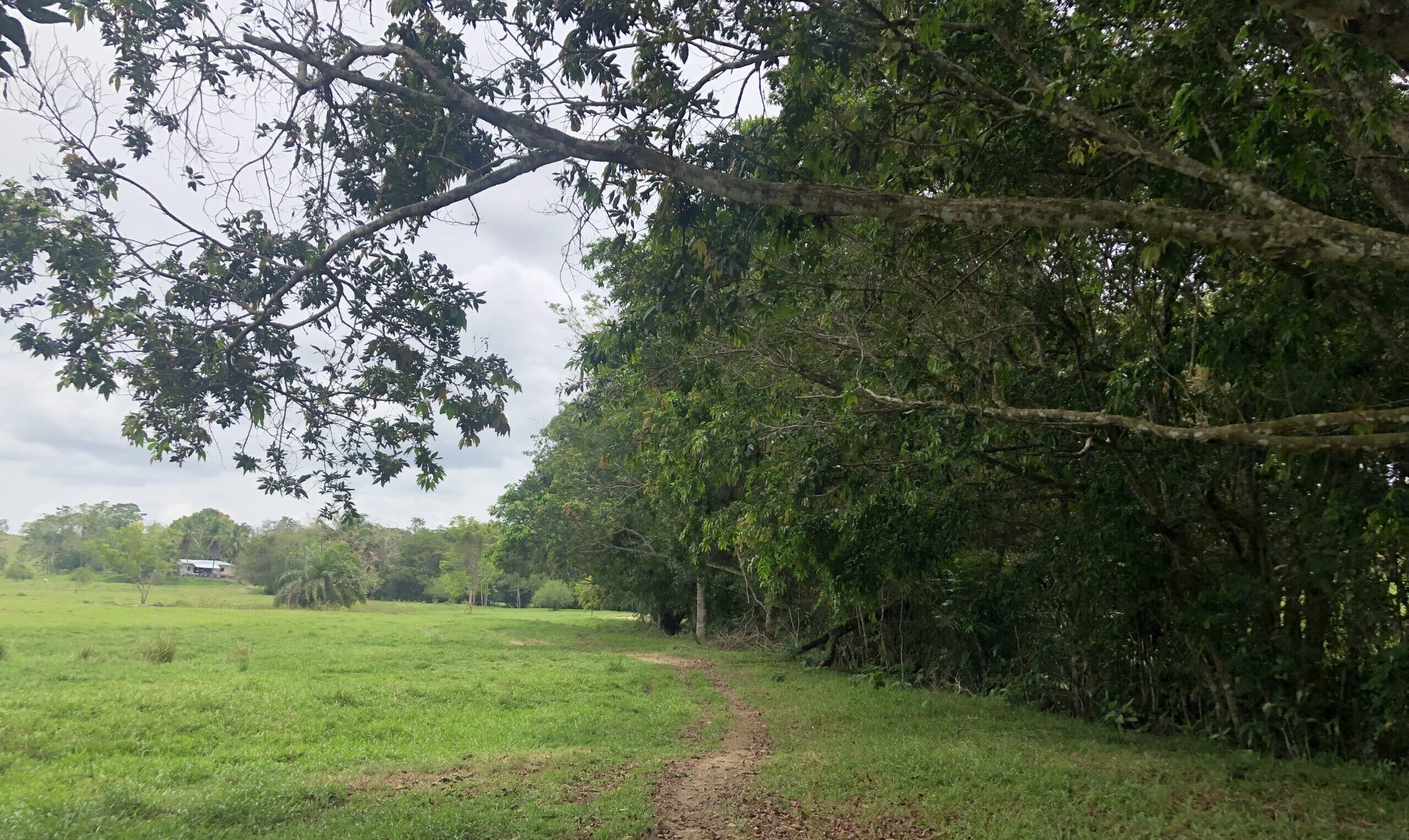
Feeling inspired?
Since 1985, CLP has directed funding, training and other support to approximately 3,100 early-career conservationists around the world who are leading vital action on the ground to save threatened species. Through our annual Team Awards, we direct this support to priority projects, which generate conservation impact at the grassroots level and beyond.
To learn more:
- Read more about CLP’s alumni: incredible conservationists in their field, and learn about our conservation award funding if you would like to be a part of future training and support.
- Interested in supporting the Conservation Leadership Programme? We would love to hear from you.

